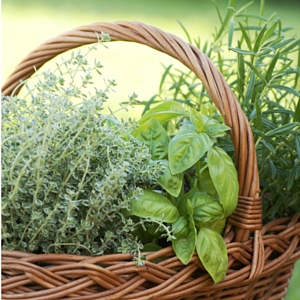What are the best culinary herbs for your herb garden? Ignore those online listicles and get out your cookbooks. Rather than someone else, who you don’t even know, telling you what you need, go right to the source to make your own list. Look over your favorite recipes and make a note of the herbs that you use most often. Then, if you have space in your herb garden, make a second list of herbs that you use less often.
Here’s what I grow in my culinary herb garden:
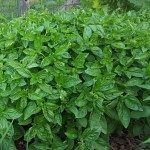 Basil – Ocimum basilicum Originally from Southeast Asia where it is perennial, we grow it as an annual. It comes in seemingly endless shapes and flavors. The most popular is sweet basil and Genovese basil. If you like Mexican cooking, try cinnamon basil. Persian basil is a must in Persian cooking. No matter which basil you grow, give it full sun and lots of water. Basil loves heat and humidity. Keep your plants deadheaded so they will produce flavorful leaves all summer.
Basil – Ocimum basilicum Originally from Southeast Asia where it is perennial, we grow it as an annual. It comes in seemingly endless shapes and flavors. The most popular is sweet basil and Genovese basil. If you like Mexican cooking, try cinnamon basil. Persian basil is a must in Persian cooking. No matter which basil you grow, give it full sun and lots of water. Basil loves heat and humidity. Keep your plants deadheaded so they will produce flavorful leaves all summer.
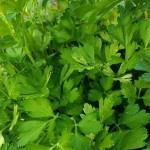 Parsley – Petroselinum crispum One my favorite biennials, it comes in either flat leaf or curly leaf. The flat leaf is the one most often used in cooking, but you can also use the curly leaf if you happen to be out of the flat leaf. Curly leaf is mainly used for a garnish. Both are host plants for small butterflies, so wash the leaves carefully to remove butterfly eggs. Be sure to grow enough to feed both your family and the hungry caterpillars.
Parsley – Petroselinum crispum One my favorite biennials, it comes in either flat leaf or curly leaf. The flat leaf is the one most often used in cooking, but you can also use the curly leaf if you happen to be out of the flat leaf. Curly leaf is mainly used for a garnish. Both are host plants for small butterflies, so wash the leaves carefully to remove butterfly eggs. Be sure to grow enough to feed both your family and the hungry caterpillars.
 Cilantro – Coriandrum sativum The seed is coriander. Cilantro looks a bit like parsley but tastes very different! It’s also a cool season annual. If you play your cards right, you can get two harvests per year out of your cilantro. When your spring cilantro bolts in the heat of summer, allow it to form seed that you can sow at the end of summer or just allow to drop in your garden where it will germinate in time for a fall crop.
Cilantro – Coriandrum sativum The seed is coriander. Cilantro looks a bit like parsley but tastes very different! It’s also a cool season annual. If you play your cards right, you can get two harvests per year out of your cilantro. When your spring cilantro bolts in the heat of summer, allow it to form seed that you can sow at the end of summer or just allow to drop in your garden where it will germinate in time for a fall crop.
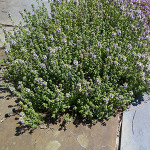 Thyme – Thymus vulgaris A must in my herb garden. I love to make soup and I love thyme in my soup! Grow the upright varieties to cook with. The creeping thymes are harder to harvest and have less flavor. Thyme is a perennial Mediterranean plant so it is drought tolerant. It will also tolerate a little shade. English thyme is the preferred variety to cook with. French thyme is milder. If you want to try something different, plant lemon thyme or orange thyme.
Thyme – Thymus vulgaris A must in my herb garden. I love to make soup and I love thyme in my soup! Grow the upright varieties to cook with. The creeping thymes are harder to harvest and have less flavor. Thyme is a perennial Mediterranean plant so it is drought tolerant. It will also tolerate a little shade. English thyme is the preferred variety to cook with. French thyme is milder. If you want to try something different, plant lemon thyme or orange thyme.
 Rosemary – Salvia rosmarinus Another Mediterranean plant that is drought tolerant but this one needs full sun to flourish. Give it plenty of space. Depending on the variety, rosemary grows 4 to 6 feet tall! It is only reliably hardy through zone 7. Hybridizers have produced two, Arp and Hill Hardy, that may make it through a zone 6 winter if planted in a protected area. It is recommended that rosemary be grown in containers and brought indoors during the winter. Make sure that it gets plenty of light and don’t over water it.
Rosemary – Salvia rosmarinus Another Mediterranean plant that is drought tolerant but this one needs full sun to flourish. Give it plenty of space. Depending on the variety, rosemary grows 4 to 6 feet tall! It is only reliably hardy through zone 7. Hybridizers have produced two, Arp and Hill Hardy, that may make it through a zone 6 winter if planted in a protected area. It is recommended that rosemary be grown in containers and brought indoors during the winter. Make sure that it gets plenty of light and don’t over water it.
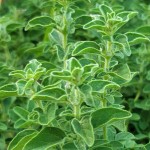 Oregano – Origanum vulgare Avoid anything in the nursery that is labelled “oregano”. It has very little scent and no flavor. You want Greek oregano or Italian oregano for your recipes. Give it a sunny spot in your garden. A word of caution: oregano is a member of the mint family and may become invasive. Keep an eye on this hardy perennial to keep it from spreading too far.
Oregano – Origanum vulgare Avoid anything in the nursery that is labelled “oregano”. It has very little scent and no flavor. You want Greek oregano or Italian oregano for your recipes. Give it a sunny spot in your garden. A word of caution: oregano is a member of the mint family and may become invasive. Keep an eye on this hardy perennial to keep it from spreading too far.
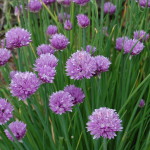
Chives – Allium schoenoprasum Most people grow spring blooming chives for their onion flavor. The chives with the white flowers that appear in the fall are garlic chives (Allium tuberosum). They have a garlic onion flavor. Spring blooming chives are another plant that can become invasive. Give it a sunny corner but harvest from it regularly to keep it in check. And eat those lovely lavender flowers before they go to seed and spread more chives in your garden.
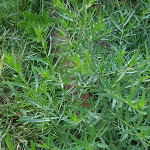 French Tarragon – Artemisia dracunculus This is another one who has an alter ego – Russian tarragon (Artemisia dracunculoides). Avoid it. It has no flavor. Stick to the flavorful French tarragon. It is a hardy perennial that wants to bask in full sun. It has very shallow roots so be careful when weeding around it. Better yet, mulch it heavily to prevent weeds from germinating near it. French tarragon is known as a “nurse plant”. It improves the health of the plants surrounding it.
French Tarragon – Artemisia dracunculus This is another one who has an alter ego – Russian tarragon (Artemisia dracunculoides). Avoid it. It has no flavor. Stick to the flavorful French tarragon. It is a hardy perennial that wants to bask in full sun. It has very shallow roots so be careful when weeding around it. Better yet, mulch it heavily to prevent weeds from germinating near it. French tarragon is known as a “nurse plant”. It improves the health of the plants surrounding it.
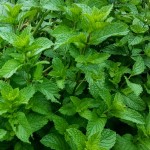 Mint – Mentha spp This is one that you definitely want to grow in a container. Planted in the ground it will take over not just your garden, but your entire yard! And it grows almost anywhere sunny or a little shady. Keep it well watered, mint does not like to be dry. Spearmint is the mint commonly used in cooking. Peppermint can be brewed in a tea that helps digestive upsets.
Mint – Mentha spp This is one that you definitely want to grow in a container. Planted in the ground it will take over not just your garden, but your entire yard! And it grows almost anywhere sunny or a little shady. Keep it well watered, mint does not like to be dry. Spearmint is the mint commonly used in cooking. Peppermint can be brewed in a tea that helps digestive upsets.
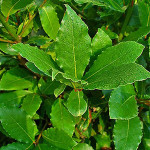 Bay Laurel – Laurus nobilis Bay leaves come from a tree, that properly maintained can be grown in a container. A little judicious root pruning, as well as top pruning, keeps it to a manageable size. Native to the Mediterranean, it likes to be dry so avoid overwatering it. It prefers full sun but will tolerate a little shade making it easier to overwinter it indoors for those of us who live north of zone 8. The leaves can be harvested any time and are easy to dry.
Bay Laurel – Laurus nobilis Bay leaves come from a tree, that properly maintained can be grown in a container. A little judicious root pruning, as well as top pruning, keeps it to a manageable size. Native to the Mediterranean, it likes to be dry so avoid overwatering it. It prefers full sun but will tolerate a little shade making it easier to overwinter it indoors for those of us who live north of zone 8. The leaves can be harvested any time and are easy to dry.
What culinary herbs are on your list?

